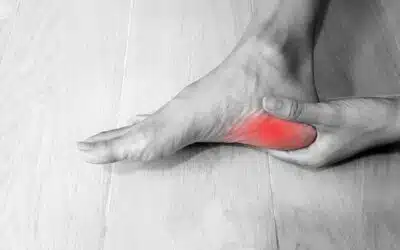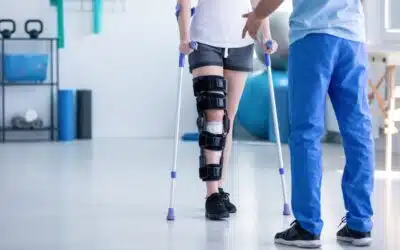In today’s fast-paced world, where many of us spend hours working at desks or using various devices, the concept of ergonomics has never been more relevant. Ergonomics, derived from the Greek words “ergon” (work) and “nomos” (laws), essentially refers to the study of designing products and environments to best fit the people who use them. Its primary goal is to create spaces and tools that align with our physiological and psychological needs, ensuring both efficiency and well-being.
The importance of ergonomics cannot be overstated. A well-designed workspace can boost productivity, reduce fatigue, and prevent a host of physical ailments ranging from minor discomforts like eye strain to more severe conditions like repetitive strain injuries or chronic back pain. On the flip side, poor ergonomics can lead to decreased efficiency, increased error rates, and long-term health issues.
This is where physiotherapy comes into play. Physiotherapy, a healthcare profession dedicated to restoring and maintaining functional movement and physical well-being, often intersects with the world of ergonomics. When individuals face physical challenges due to poorly designed workspaces or habits, physiotherapists can offer corrective exercises, postural training, and advice on ergonomic adjustments. In essence, while ergonomics aims to prevent physical issues by design, physiotherapy offers solutions when problems do arise.
Lastly, it’s essential to understand that the significance of ergonomics extends beyond our workspaces. Our home environment, where we relax, socialize, and rejuvenate, should also be designed with ergonomic principles in mind. A well-set home environment can promote relaxation, reduce the risk of injuries, and enhance overall well-being. Whether it’s the way our sofa is positioned, the height of our kitchen counters, or the arrangement of our home office, every detail plays a role in our physical health and comfort.
In conclusion, the synergy between ergonomics and physiotherapy offers a holistic approach to health and well-being. By understanding and implementing ergonomic principles and seeking physiotherapy when needed, we can create workspaces and homes that nurture our bodies and minds.
This content provides a comprehensive introduction to the topic, touching on the key aspects of ergonomics, its connection with physiotherapy, and the importance of a well-set environment both at work and home.
Understanding Ergonomics
Ergonomics is a term that has become increasingly prevalent in modern discourse, especially as our lives become more intertwined with technology and specific work environments. But what exactly is ergonomics, and why is it so crucial?
The history of ergonomics dates back to ancient civilizations. For instance, the ancient Greeks displayed an understanding of ergonomics when designing their tools and workplaces. However, it was during the Industrial Revolution and the two World Wars that the formal study of ergonomics gained momentum. The need to improve efficiency and safety in factories and the military led to systematic research into human capabilities and limitations.
Ergonomics can be broadly categorized into three main domains:
- Physical Ergonomics: This domain is concerned with human anatomical, anthropometric, physiological, and biomechanical characteristics as they relate to physical activity. It addresses issues like workstation design, posture, manual handling, and repetitive movements. For example, designing a chair that supports the spine’s natural curve falls under physical ergonomics.
- Cognitive Ergonomics: This focuses on mental processes such as perception, memory, reasoning, and motor response. It considers how people interact with user interfaces, how they process information, and how design can influence human error. An example would be designing a website that’s intuitive and easy to navigate.
- Organizational Ergonomics: This domain is concerned with the optimization of socio-technical systems, including their organizational structures, policies, and processes. It looks at topics like work schedules, teamwork, and telecommuting. For instance, allowing flexible work hours to align with an individual’s natural circadian rhythm is an organizational ergonomic strategy.
Ignoring the principles of ergonomics can have detrimental effects on our health. Poor ergonomics can lead to a variety of physical ailments, commonly termed as Musculoskeletal Disorders (MSDs). These include conditions like carpal tunnel syndrome, tendonitis, and chronic back pain. Such ailments often arise from repetitive strain, poor posture, or inadequate workstation setups. For instance, a computer monitor placed too high or too low can lead to neck strain, while a non-ergonomic mouse can result in wrist pain.
In essence, understanding and implementing ergonomic principles is not just about comfort—it’s a vital aspect of our overall health and well-being.
This content delves into the concept of ergonomics, its historical context, the three main domains, and the potential health implications of neglecting ergonomic principles.
The Role of Physiotherapy
Physiotherapy, often referred to as physical therapy in some regions, is a healthcare profession dedicated to enhancing and restoring functional movement and overall physical well-being. It encompasses a range of interventions, including manual therapy, exercise prescription, and patient education, all aimed at promoting, maintaining, or restoring physical function and health.
The relationship between physiotherapy and ergonomics is a close one. As we’ve established, poor ergonomics can lead to a host of physical ailments, many of which fall under the purview of physiotherapists.
Here’s how physiotherapy plays a pivotal role in addressing these issues:
- Assessment and Diagnosis: Physiotherapists are trained to assess postural imbalances, movement restrictions, and pain patterns. They can identify issues that may have arisen due to poor ergonomic setups, such as muscle imbalances or joint restrictions.
- Tailored Interventions: Therapists can provide specific interventions once a problem is identified. This might include manual therapies like massage or joint mobilizations, therapeutic exercises to strengthen weak muscles or stretch tight ones, and advice on posture and movement patterns.
- Education: A significant part of physiotherapy involves educating patients. This can range from teaching someone how to sit correctly at their desk to providing exercises they can do during work breaks. By understanding the root causes of their discomfort or pain, individuals can make informed decisions about their workspace and habits.
When discussing physiotherapy in the context of ergonomics, it’s essential to differentiate between preventive and corrective physiotherapy:
- Preventive Physiotherapy: This approach focuses on averting potential issues before they arise. For instance, a physiotherapist might advise on the optimal setup of a workstation or suggest exercises to counteract the strain of repetitive tasks. The goal here is to ensure that individuals don’t develop problems in the first place.
- Corrective Physiotherapy: This comes into play once an issue has already manifested. For example, if someone has developed carpal tunnel syndrome from prolonged poor wrist positioning while typing, corrective physiotherapy might involve treatments to reduce inflammation, exercises to strengthen the wrist, and ergonomic advice to prevent recurrence.
In conclusion, physiotherapy plays a dual role when it comes to ergonomics. It not only offers solutions to existing problems but also provides strategies to prevent potential issues. As our work and lifestyles continue to evolve, the symbiotic relationship between ergonomics and physiotherapy becomes increasingly crucial in ensuring our physical well-being.
This content delves deeper into the role of physiotherapy, its relationship with ergonomics, and the distinction between preventive and corrective approaches.
Setting up a Healthy Workspace
In the modern era, where many of us spend a significant portion of our day at a desk, the importance of a well-structured workspace cannot be overstated. A properly set up workspace not only boosts productivity but also minimizes the risk of physical ailments.

Let’s explore the critical components of a healthy workspace:
The Importance of a Proper Desk and Chair Setup:
- Your desk and chair are the foundational elements of your workspace. Their configuration can make the difference between a day of productive, pain-free work and one plagued by discomfort or even injury. A well-chosen desk and chair can support proper posture, reduce muscle strain, and enhance overall comfort.
Desk Height and Depth:
- Height: The ideal desk height allows you to comfortably rest your arms at a roughly 90-degree angle while typing or writing. If the desk is too high, it can lead to shoulder strain; if too low, it can cause wrist pain.
- Depth: A desk should be deep enough to accommodate your monitor at a comfortable distance (typically an arm’s length away) and provide space for other essential items without feeling cramped.
Chair Support and Adjustability:
- A good chair provides support to the lumbar region of your spine, promoting a neutral spine posture. It should be adjustable in height so that your feet rest flat on the ground (or on a footrest) and your thighs are parallel to the floor.
- The ability to adjust the backrest angle and seat depth can further tailor the chair to your body, ensuring maximum comfort.
Monitor Placement and Eye Level:
- Your monitor should be positioned directly in front of you, about an arm’s length away. The top of the screen should be at or slightly below eye level. This setup reduces the need for head tilting and minimizes the risk of neck strain.
Keyboard and Mouse Positioning:
- Your keyboard should be placed directly in front of you, allowing your upper arms to remain close to your body and your hands to be slightly below the level of your elbows.
- The mouse should be located immediately next to the keyboard, easily reachable without extending your arm fully. Both the keyboard and mouse should be on the same surface.
Importance of Regular Breaks and Stretches:
- Even with an ergonomic setup, prolonged sitting can lead to muscle stiffness and reduced circulation. It’s crucial to take short breaks every 30 minutes to an hour. Use this time to stand, stretch, or even take a brief walk. This not only alleviates physical strain but also refreshes the mind.
Lighting and its Impact on Eye Strain:
- Proper lighting is essential for eye health. The workspace should be well-lit but without causing glare on the screen. Natural light is ideal, but if that’s not possible, ensure that artificial lighting is evenly distributed. Avoid positioning monitors directly in front of or behind windows to prevent glare. Task lights with adjustable brightness can also be beneficial for specific activities.
Setting up a healthy workspace requires a comprehensive approach, considering every element, from furniture to lighting. By investing time and thought into this setup, you can create an environment that supports your physical well-being and productivity.
Ergonomics in the Home Environment
While the term “ergonomics” is often associated with office spaces and workstations, its principles are equally applicable and vital in our homes. After all, our homes are where we spend a significant portion of our lives, engaging in various activities from resting and cooking to entertaining.
The Significance of Ergonomics Beyond the Workspace:
- Our homes should be sanctuaries, places where we feel most comfortable and at ease. However, poor ergonomic design at home can lead to discomfort, reduced functionality, and even injuries. Whether it’s the way we sit on our couch, the height of our kitchen counters, or the lighting in our reading nooks, every detail impacts our well-being.
Tips for Setting up Ergonomic Living Spaces:
Furniture Selection and Arrangement:
- Choose furniture that supports the body’s natural curves. For instance, sofas and chairs should provide adequate lumbar support.
- Arrange furniture to promote easy movement and reduce the need for excessive bending or reaching. For example, frequently used kitchen items should be within arm’s reach to avoid unnecessary stretching or bending.
Importance of Varied Sitting and Standing Positions:
- While it’s essential to have comfortable seating, it’s equally crucial to change positions regularly. Consider adjustable furniture or varied seating options in living areas.
- Adjustable counters or standing desks can be beneficial in spaces like the kitchen, allowing family members to alternate between sitting and standing.
Creating Ergonomic Spaces for Recreational Activities:
- Our homes are not just for resting; they’re also where we engage in hobbies and recreational activities. These spaces should be designed with ergonomics in mind.
Reading Nooks:
- Ensure adequate lighting to prevent eye strain. Chairs or lounges should support the back, and there should be a surface or stand to hold books or devices at a comfortable height and angle.
TV Viewing Areas:
- The TV should be positioned at eye level when seated to prevent neck strain. Avoid placing it too high, like above a fireplace, unless it can be tilted downward.
- Seating should be at a distance where the screen occupies about 30° of your field of vision. Too close can cause eye strain, and too far can make it hard to see details.
In essence, while our homes are places of relaxation and recreation, they should also be spaces of health and well-being. By incorporating ergonomic principles into our living spaces, we can ensure that our homes support our physical health just as much as they nourish our mental and emotional well-being.
Physiotherapy Tips for Home and Work
Physiotherapy offers a wealth of knowledge and techniques that can be applied to our daily routines, ensuring that we maintain optimal physical health whether we’re at home, work, or anywhere in between. Here are some valuable physiotherapy insights:
Simple Exercises to Alleviate Common Ergonomic-Related Pains:
- Neck Stretches: Gently tilt your head to one side, bringing the ear towards the shoulder. Hold for 15-20 seconds and repeat on the other side. This can help alleviate tension from prolonged sitting or screen time.
- Wrist Flexor and Extensor Stretches: Extend one arm in front of you with the palm up. Use the other hand to gently press down on the extended hand’s fingers, stretching the wrist’s underside. Repeat with the palm facing down.
- Shoulder Shrugs: Raise your shoulders towards your ears, hold for a few seconds, and then relax. This can help release tension in the shoulder and neck area.
- Seated Spinal Twist: While seated, turn your torso to one side, holding the back of the chair for support. Hold for 15-20 seconds and repeat on the other side.

Importance of Posture and Alignment:
- Maintaining a neutral spine is crucial. Whether you’re sitting at a desk, standing in the kitchen, or lounging on the sofa, be mindful of your spine’s alignment. Avoid slouching or hunching.
- When seated, feet should be flat on the ground, and knees should be at a 90-degree angle. The lower back should be supported, and the shoulders should be relaxed.
- Regularly check in with your body. Set reminders, if necessary, to adjust your posture throughout the day.
Recommendations for Regular Check-Ups with a Physiotherapist:
- Even if you’re not experiencing pain or discomfort, periodic check-ups with a physiotherapist can be beneficial. They can assess your posture, movement patterns and provide personalized advice.
- If you’ve previously had injuries or have chronic conditions, regular visits can help monitor your progress and prevent potential flare-ups.
- A physiotherapist can also provide guidance on ergonomic setups tailored to your needs, ensuring that both your home and workspace support your physical well-being.
In conclusion, physiotherapy offers a proactive approach to health, emphasizing prevention, awareness, and tailored interventions. By integrating these tips into our daily routines, we can navigate both our home and work environments with greater comfort, health, and efficiency.
The Future of Ergonomics and Physiotherapy
As we navigate the rapidly evolving landscape of the 21st century, both ergonomics and physiotherapy are poised to undergo significant transformations. Advancements in technology, shifts in work culture, and a growing emphasis on holistic well-being are shaping the future of these fields. Here’s a glimpse into what lies ahead:
Technological Advancements Aiding Ergonomic Setups:
- Smart Furniture: The rise of furniture embedded with sensors can automatically adjust to the user’s body, ensuring optimal support and posture. For instance, chairs might adjust their lumbar support based on the user’s spine curvature.
- Augmented Reality (AR) and Virtual Reality (VR): These technologies can offer real-time feedback on posture and ergonomics. Imagine wearing AR glasses that notify you when you’re slouching or provide guidance on optimal screen placement.
- Wearable Tech: Devices like smartwatches or posture-correcting wearables can monitor and provide feedback on movement patterns, ensuring that users maintain ergonomic practices throughout the day.
The Increasing Role of Virtual Physiotherapy Sessions:
- Telehealth: With the rise of digital communication platforms, physiotherapy is increasingly being offered remotely. Patients can now consult with their therapists from the comfort of their homes, making healthcare more accessible.
- Digital Assessment Tools: Advanced software can analyze a patient’s movement patterns, posture, and even muscle activation, providing detailed data to physiotherapists for more accurate diagnoses and treatment plans.
- Virtual Reality Rehabilitation: VR can immerse patients in environments tailored for specific therapeutic exercises, making rehabilitation more engaging and effective.
Predictions for the Future Workspace and Home Setups:
- Flexible Work Environments: As remote work becomes more prevalent, there will be a greater emphasis on creating ergonomic home offices. Companies might offer ergonomic assessments and equipment as part of their employee wellness programs.
- Dynamic Workspaces: The traditional static desk might give way to more dynamic setups, allowing users to easily switch between sitting, standing, or even walking (with treadmill desks).
- Holistic Home Design: As people become more aware of ergonomics, homes might be designed with a holistic approach, considering not just aesthetics but also the physical well-being of the inhabitants. This could lead to more ergonomic kitchen designs, living spaces, and even recreational areas.
In essence, the future of ergonomics and physiotherapy is intertwined with technological innovation and a broader understanding of human well-being. As we continue to prioritize health and comfort in our daily environments, both fields will play an increasingly pivotal role in shaping our daily lives.
Conclusion
In our journey through the realms of ergonomics and physiotherapy, one thing becomes abundantly clear: the spaces we inhabit and the way we move within them have profound implications for our physical well-being. Every detail matters, whether it’s the chair we sit on for hours at work, the posture we maintain while reading a book, or the exercises we employ to alleviate a stiff neck.
Ergonomics, with its focus on designing environments tailored to human needs, plays a pivotal role in preventing a myriad of potential health issues. It’s a proactive approach, emphasizing the importance of prevention over cure. On the other hand, physiotherapy offers solutions when physical challenges arise, providing therapeutic interventions and guidance to restore optimal movement and function.
As we stand at the intersection of technological advancements and a growing awareness of holistic health, the synergy between ergonomics and physiotherapy becomes even more pronounced. They collectively offer a roadmap to a life where comfort, efficiency, and health coexist harmoniously.
To all readers: take a moment to assess your surroundings. Are there changes you can make to your workspace or home to better support your physical health? Remember, small adjustments can lead to significant improvements. Embrace the principles of ergonomics and consider consulting with a physiotherapist to ensure that your daily environments nurture both your body and mind.
Ultimately, our health is an invaluable asset, and by integrating the insights from ergonomics and physiotherapy into our daily lives, we take a proactive step towards safeguarding it.
References:
“Introduction to Ergonomics” by R.S. Bridger
- This book provides a comprehensive overview of ergonomics with practical applications and case studies.
“Ergonomics for Therapists” by Karen Jacobs
- This book is a practical introduction to ergonomics, biomechanics, and occupational therapy theory for implementing ergonomic interventions in the clinical setting.
“Fundamentals of Musculoskeletal Pain” by Thomas Graven-Nielsen, Lars Arendt-Nielsen
- This book focuses on the understanding of musculoskeletal pain, its assessment, and its relationship to posture, movement, and psychosocial factors.
“Therapeutic Exercise: Foundations and Techniques” by Carolyn Kisner, Lynn Allen Colby
- This book offers a detailed exploration of therapeutic exercises used in a variety of clinical settings and applications, including posture, balance, and other movement disorders.
“Occupational Ergonomics: A Practical Approach” by Theresa Stack, Lee Ostrom, Cheryl Wilhelmsen
- This book blends the theoretical aspects of ergonomics with the practical experience of the authors, offering detailed advice on applying ergonomic principles in the workplace.
“Physical Rehabilitation” by Susan B. O’Sullivan, Thomas J. Schmitz, George Fulk
- This book provides a comprehensive overview of the assessment and therapeutic interventions for a range of conditions encountered in physical therapy practice.






0 Comments